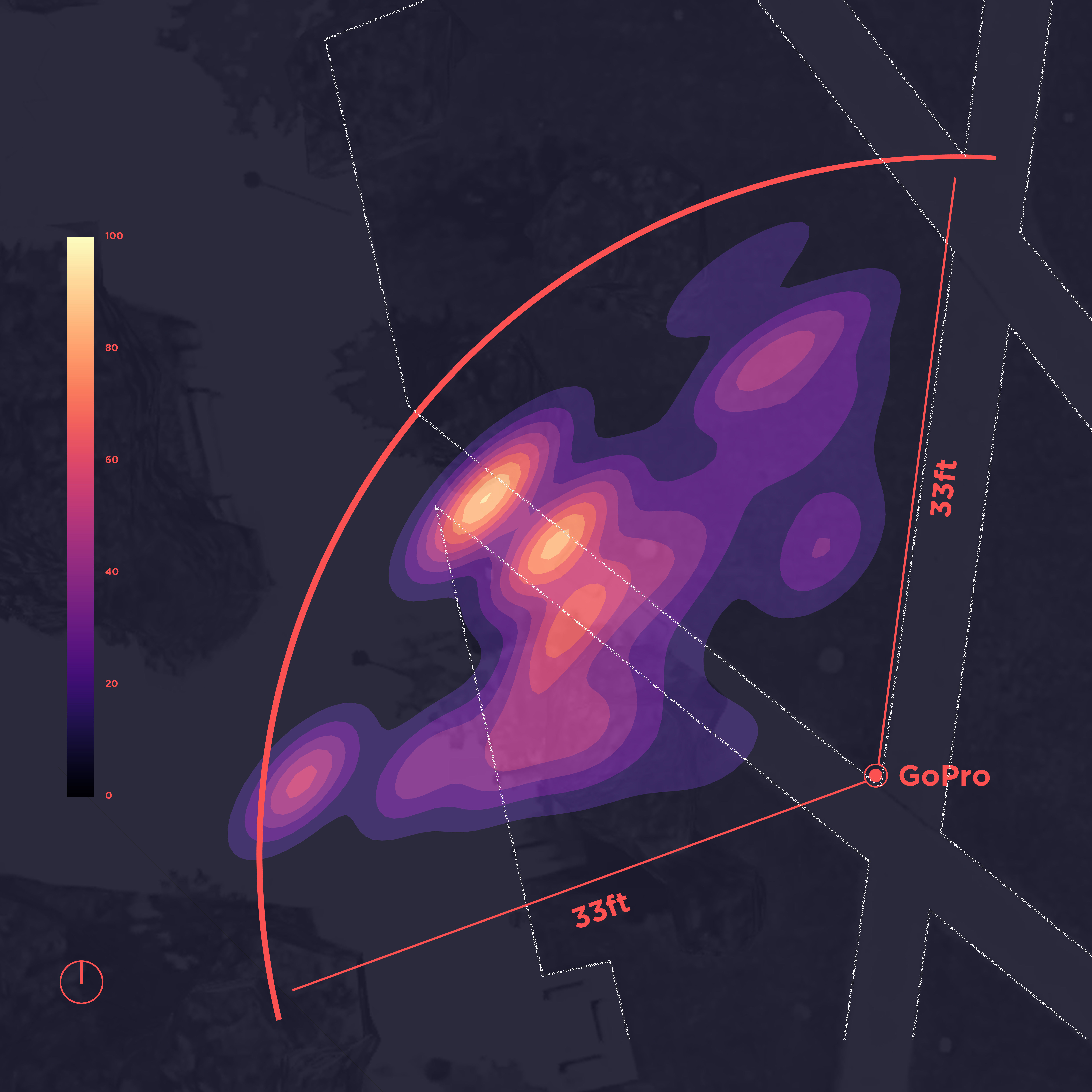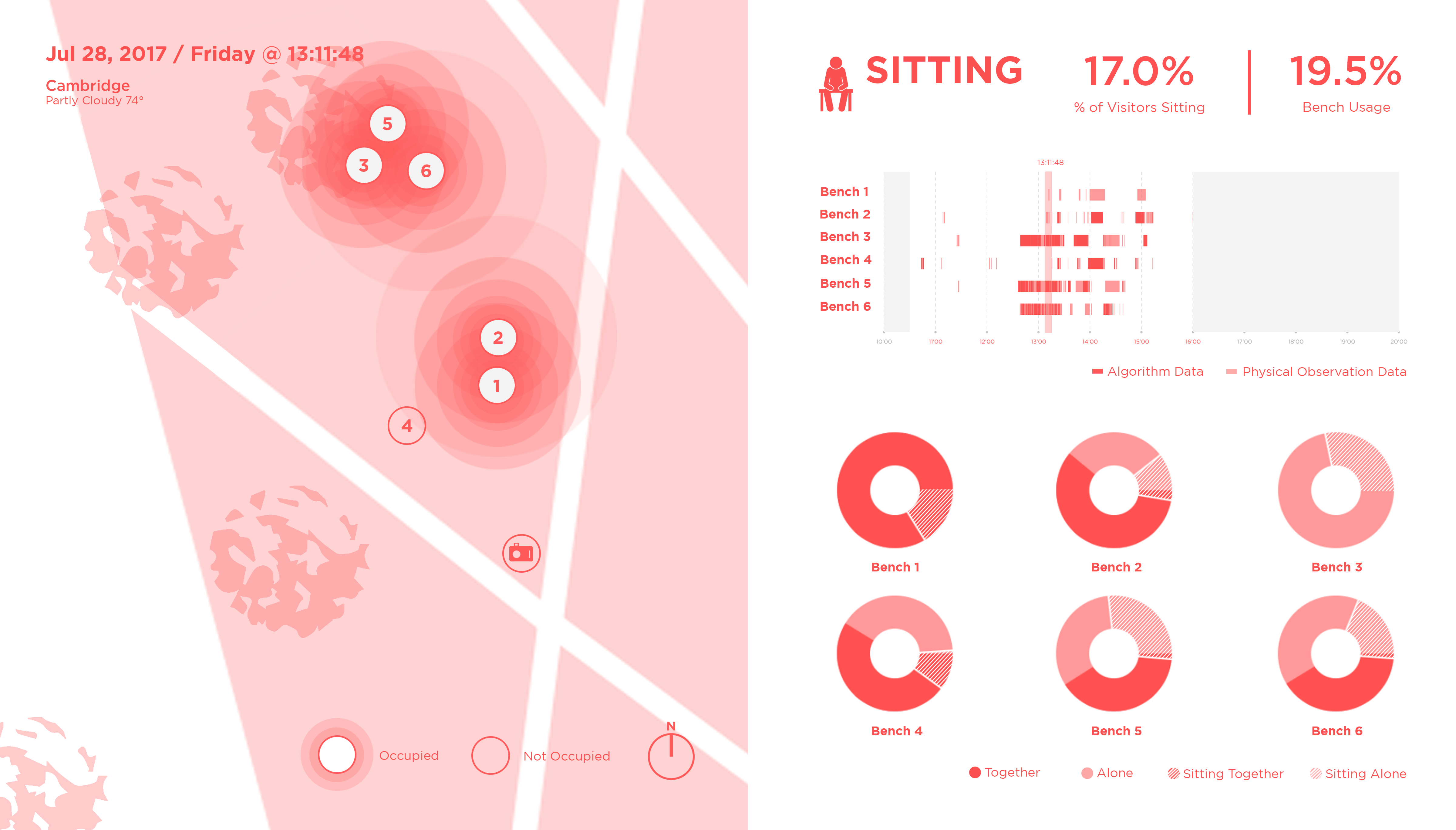Benchmark
2017-2018
︎︎︎ Project Website
︎︎︎ Download Report
︎︎︎ Fabrication Toolkit
Project Lead
Sarah Williams
Project Managers
Hayrettin Gunc
Chaewon Ahn
Research Assistants
Dennis Harvey
Wenfei Xu
Mario Giampieri
Christine Langston
Ege Ozgirin
Zhekun Xiong
Xinhui Li
Scott Margeson
Jie Liu
Pushpa Prabakar
Michael Pearce
Meredith Julian
Support from
Gehl Institute
︎︎︎ Project Website
︎︎︎ Download Report
︎︎︎ Fabrication Toolkit
Project Lead
Sarah Williams
Project Managers
Hayrettin Gunc
Chaewon Ahn
Research Assistants
Dennis Harvey
Wenfei Xu
Mario Giampieri
Christine Langston
Ege Ozgirin
Zhekun Xiong
Xinhui Li
Scott Margeson
Jie Liu
Pushpa Prabakar
Michael Pearce
Meredith Julian
Support from
Gehl Institute
Overview
This project proposes a set of prototypes that test the ability to create tools for measuring urban public space in the Gehl method, which centers on how people’s senses, movements, interests, and behaviors are influenced by the scale and quality of built form. The ethos for the tools and ideas developed in this framework center on qualitative interaction with public space: Beyond a simple count, the tools will allow us to better understand more nuanced issues such as the social context in which space is being used, the ability for public space to influence and encourage social interactions, or the characteristics and types of behaviors generated by public spaces.
By openly sharing the data collection toolkit and the data developed, the project will create a new way to collect data for urban design. These sensing tools will be an example for how open source data collection strategies can generate urban change.


The Bench
Seating is key to place making because it invites passersby to visit, linger in, and enjoy public spaces in ways that activate our public and civic lives. As a result, studying the hourly or daily rhythms of seating provides insight into how urban design elements impact the public realm.
A bench was designed to make those measure- ments. Outfitted with sensors that measured their movements, the presence of light and shade, and if someone was sitting on them. The sensors were designed to be easily embedded in the bench.
Meant to be a Do-it-Yourself (DIY) project the bench design is freely shared. Anyone can download the Autocad files, bring to his or her local CNC router shop to have the files cut, and construct the bench themselves. The benches were designed so that you would only need one sheet of plywood. The website included a tutorial for assembling the bench.
Being transparent about the data collection was essential to the team for ethical reasons. There- fore the benches were designed to allow people to see the sensors through slots. Future bench designs will not include this feature as it made the benches a spectacle themselves skewing some of the results.


The Sensor
The technical team conducted a thorough investigation of sensor technologies currently in use in similar projects and identified three categories of sensors needed to measure pub- lic space. The first type was location tracking sensors, which the team intended to use to track bench locations and pedestrian activity. The second type were environmental sensors aimed at identifying and recording distinct environmental conditions that affect public space usage. The third category were sensors that could to translate human behavior into quantifiable data such as determining whether a person was sitting on the bench.
A sensor box was designed to be embedded into the bench. The box design made them easily transferable to other types of furniture. The sensors in the box measured the benches movement, load (if someone or something
put pressure on the bench), sounds, and light. Each sensor box also included a cellular device to send the data back to the server real time as well as data back-up, in case the cell phone should fall.
Similar to the benches the sensor box was de- signed so that it would be Do-it-Yourself (DIY). All the material was available on the website, anyone could purchase the sensors we recom- mended and put them together following the tutorial we provide.

The Board
The Board was developed to create a static ele- ment that would be housed with a camera to un- derstand the whole site, rather than the current state of a bench. A Go-Pro took images every 5 seconds, and image processing algorithms were used on the photos to identify flows of people, social cohesion (measured by social interac- tion), and curiosity for the benches. Processing the images to estimate pedestrians and social interactions on site proved much easier than the data we received from the sensor boxes.
Image analytics are not without ethical con- cerns. Therefore, we developed a process in which people location data was saved but not the image captured. Image processing was used to transform the image of a person to a vector point which was then processed to determine movement.
Video cameras are everywhere in the urban environment, therefore, developing image processing models that can measure public space ethically and responsibility could provide considerable value. Currently we protect those captured in images through privacy laws.



Field Tests
The benches, board, and their sensors were field tested three times. The project on MIT’s campus was deployed daily between July 25 and August 6, 2017, from 10:00 a.m. to 6:00 p.m. North Court, a large public plaza, was selected because it is located at the intersection of several busy pedestrian corridors, ensuring a variety of pedes- trian and stationary activities.
In September 2017, the benches were a part of Better Block Belmont, a community event aimed at revitalizing a neighborhood in Charlotte, NC. Four benches and a sandwich board were shipped to the event, and the Better Block team downloaded the data after the event themselves, showing the project was replicable for those outside the development team.
In October 2017, four benches and the sandwich board were deployed at Hubweek, a week-long festival of civic innovation in Boston’s City Hall Plaza. Based on the previous two releases of the benches, the sensor box code was enhanced to improve data interpretation, and therefore the team was able to get more precise measure- ments than the prior two releases.
 Daily maps were generated to show how each bench was used, you can see they were often near shade and heavily used at lunchtime on MIT’s campus.
Daily maps were generated to show how each bench was used, you can see they were often near shade and heavily used at lunchtime on MIT’s campus.


Publications
Williams, Sarah Chaewon Ahn, Hayrettin Gunc,
Ege Ozgirin, Michael Pearce, Zhekun Xiong. “Evaluating Sensors for the Measurement of Public Life: A Future in Image Processing.” Environment and Planning B, October 2018.
Williams, Sarah. “Benchmark Final Report.” Gehl Institute, Fall 2017.
Press
︎︎︎ “Project Bench Mark: Can Smart Street Furniture Enhance Public Spaces?”, progrss, January 28, 2018.
Exhibitions
Hubweek Exhibition Boston City Hall Plaza, Boston, MA, 2017
Williams, Sarah Chaewon Ahn, Hayrettin Gunc,
Ege Ozgirin, Michael Pearce, Zhekun Xiong. “Evaluating Sensors for the Measurement of Public Life: A Future in Image Processing.” Environment and Planning B, October 2018.
Williams, Sarah. “Benchmark Final Report.” Gehl Institute, Fall 2017.
Press
︎︎︎ “Project Bench Mark: Can Smart Street Furniture Enhance Public Spaces?”, progrss, January 28, 2018.
Exhibitions
Hubweek Exhibition Boston City Hall Plaza, Boston, MA, 2017